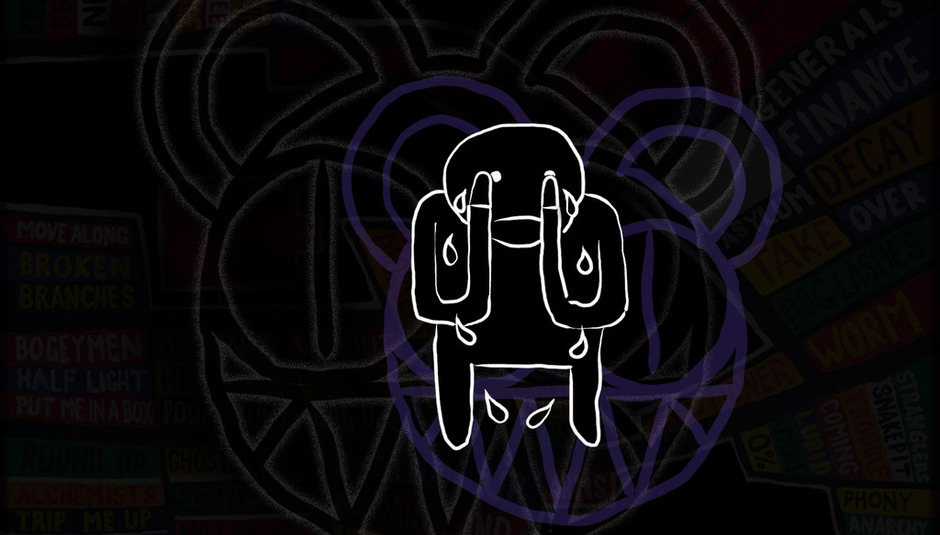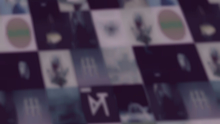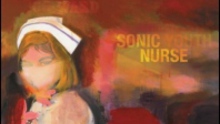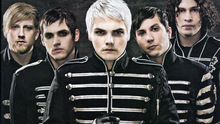“Every magazine in the world gave us Album of the Year, Jonny. How can that not affect what we do? It’s a headfuck. A total headfuck…” (Thom Yorke in Meeting People Is Easy, dir. Grant Gee)
Looking at the history of angst-ridden avant-rock, a number of bands have followed up their more concise masterpiece (Animals, Pretty Hate Machine, Siamese Dream) with a double album about descending into a personal hell (The Wall, The Downward Spiral, Mellon Collie And The Infinite Sadness), and – oh, wait, that’s kinda-sorta what Radiohead did, back in 2000 – 2001.
The clues to what Kid Amnesiac might-have-been (with less taste and self-consciousness) were all over the artwork, and labyrinthine website; there were the snippets from Under the Volcano; Thom Yorke mentioned listening to book-tapes of Dante (for his partner’s dissertation); these and numerous lyrics and song titles were like signposts to what would have been an awfully trite concept album had it been sequenced for narrative-linearity. As it happened, Kid A still ends “I will see you-ou-ou… in the ne-xt life”, drenched with syrupy strings, harps, and synth-choirs, by way of terribly British ironic apology.
(Don’t get me wrong: the OK Computer tour looked horrocious. You don’t necessarily want to give Thom a hug – he might bite you – but you’re glad all those Japanese girls did.)
Spooked by success, Kid A should have been the one called The Eraser. Across the 21 tracks of Kid Amnesiac (or 18 new 'songs-proper'), Radiohead equal – or surpass – the monster they created. Hell, the influences cited circa 1997 (Penderecki, Miles Davis, DJ Shadow, Aphex Twin, Bjork), were far more in evidence. True, the facelessness of the Warp artists Yorke revered informed the choice of mellow synth-led tracks with cryptic lyrics, and defied comparisons with pre-millennial Radiohead on the 'rock-numbers', by using strings, electric-bass, brass, or drum-machines to provide their principal thrust. Songs about distorted political relations matched songs about disintegrating personal relations, although the relationship to the listener seemed strained, too.
A lot has been written about the presence of electronica in Kid A, but it’s tentative compared to Bjork, let alone Aphex Twin, whereas the jazz influences are more creatively integrated – the use of diminished sevenths, the odd time signatures, the bubbling horns on ‘How to Disappear’, the Alice Coltrane-like harp on ‘Motion Picture Soundtrack’, as well as the emulation of her undulating rhythms on ‘In Limbo’ (and the piano version of ‘Spinning Plates’). In short: there’s a lot more jazz than just the wild skronks of ‘The National Anthem’. With no accompanying singles there were no B-sides, so here the bonus CD shows Radiohead sacrificing none of their capacity to rock-out, live, and the DVD likewise; it’s only a shame that Capitol couldn’t license any of the fan-generated content that constituted Radiohead’s early contribution to using the interweb as a democratizer… before freeconomics got out of hand (i.e. now).
Amnesiac (2001)
You can deny it’s a collection of cast-offs, but Amnesiac is marginally weaker as an album, because of the ill-fit between its abrasive electronica and the more obviously jazz-influenced tracks: ‘Pyramid Song’, which cribs an actual Alice Coltrane piano-line, and an actual Tom Waits lyric (not just their styles); ‘Life In A Glasshouse’ featuring Humphrey Lyttleton. ‘You and Whose Army’ has been called an Inkspots homage – not jazz, but a pointed choice of style pre-dating rock. In its favour, though, political condemnation is much clearer in the lyrics of Amnesiac (hence the suggestion that the choice of songs for Kid A fulfilled Yorke’s need to erase himself, much more than to get some message across). That last character song, 'Life In A Glasshouse', is more richly detailed, as well as highlighting media intrusion. If you’re inclined to read meaning into juxtaposition (and an art graduate like Yorke will be), there’s the suggestion that 'what’s in the public interest' is knowing about the government’s publicly funded deception of taxpayers – not royal divorces.
What does the re-issue add to the picture? Well, judging by the B-sides to ‘Pyramid Song’ and ‘Knives Out’ – that Radiohead laboured over loop-based music for a good while, before recognizing its limitations, and favouring triggered samples, KAOS-pads, and drum-machines supplementing live-drums but not replacing them. ‘Trans-Atlantic Drawl’, ‘The Amazing Sounds of Orgy’, and ‘Kinetic’ are part of the throw-everything-at-the-wall-and-see-what-sticks approach that produced reams of cut-up lyrics, loops, and processed shrieks that re-surface across the two albums like a dissonant flashback to nightmare. On the other hand, there’s also the piano-ballad, ‘Fog’, and Yorke’s most unaffectedly beautiful song in years (perhaps, ever), ‘True Love Waits’ (grouped arbitrarily with the Kid A material, but hinting nicely at the less A&R frightening album Radiohead might have released). The latter closed the live-album I Might Be Wrong (2002), which also gives us the piano-led ‘Spinning Plates’ (Amnesiac Disc 2), but NOT the near-8 minute ‘Everything in its Right Place’ complete with prophetic opening (“here comes the flood…”).
Hail to the Thief (2003)
This is no place for yet another rant at the man Saddam Hussein called 'Little Bush'. For the most part, HTTF gestures to the political events producing its atmosphere of terror, but the threat is mostly couched in children’s book imagery (“go and tell the king / that the sky is falling in”, after Chicken Little), which might constitute a critique of how the electorate is being infantilized… or a failure to engage. It’s easy to criticize the album on grounds of length… but after you’ve cut a couple of songs (the anti-industry Tom Waits pastiche ‘We Suck Young Blood’ and the poorly harmonized ‘I Will’) you’re left with several songs that betray weird lapses in taste vis-à-vis guitar effect and lyrics (“flan in the face / flan in the face…”). Still, for Radiohead’s sake, it’s a relief that many of the best songs are so relaxed (‘There There’, ‘Sail to the Moon’), taking a cue from ‘The Tourist’ rather than ‘Climbing up the Walls’. For a change, too, Radiohead’s electronica influences manifest themselves in the heaviest track (‘Myxomatosis’, perhaps taking a cue from ‘Black Regent’ by Add N to X.)
For those who don’t already have the singles, or the Japanese import, ComLag (2plus2isfive) (2004), HTTF Disc Two is a BIG improvement. The sequencing of ComLag was an annoyance because it would have played much better as a self-contained EP without the redundant remixes, as How’s My Driving? (1998) had done. The best here is ‘Fog (again)’ – a piano ballad that seems to revisit the child-ghost from ‘True Love Waits’, and manages to be heartbreaking even when played slightly too fast. After the rudimentary looping of the Amnesiac B-sides, ‘Where Bluebirds Fly’ is a surprisingly convincing stab at Aphex Twin’s early acid house, and would have fit well on The Eraser(2006), solving the problem of its mid-album lull. Another era of Aphex Twin (i.e. I Care or Richard D James) seems to be represented in the playful instrumental ‘I Am Citizen Insane’, which contrasts an aggressive rhythm built out of microphone pops, with rising whoops of synth, growing in the background like cartoon flowers. Weirdest of all, but in a different sense, is ‘I Am A Wicked Child’. Yorke had read Ian McDonald’s track-by-track analysis of The Beatles, Revolution in the Head, so the only explanation for this can be that he wants to avoid the Fab Four’s mistakes by… um… making their mistakes – for fun. Opening with the line, “Mother Mary, come to me / for I am a wicked child” the song’s blues riff and blaring harp sounds like John Lennon taking the piss out of McCartney’s sentimental shtick. Most like the Amnesiac B-sides (or, y’know, that Britney Spears single that sampled Bernard Herrmann), ‘Paperbag Writer’ plays around with distorted strings, but also shows off one of the fiddly bass-riffs that Yorke would increasingly write, perhaps inspired by Squarepusher.
Ultimately, No Surprises, but excellent value for completists who don’t need the sense of having earned that bootleg or b-side they tracked down so diligently. You can’t fault Capitol / EMI for not attempting the impossible and commissioning essays or interviews that would have added value without running the risk of saying nothing new and looking desperate. The live footage is worth compiling in one place, but fails to transcend the limits of a dubious medium. As ever, if you want to remember how all this came about, and what's missing from the mid-period albums, Meeting People Is Easy may be the best document.























